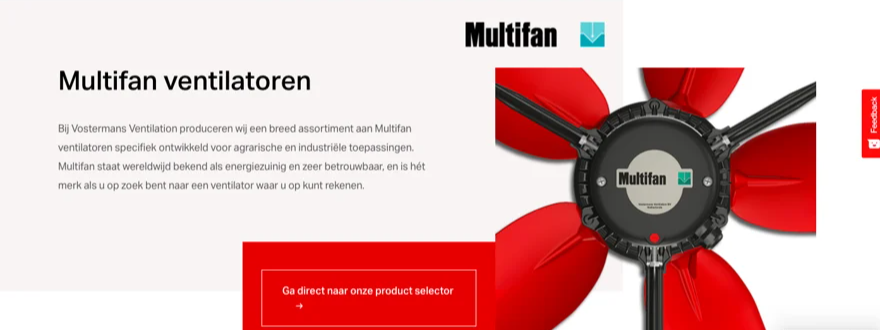Lead generation in B2B: Generating leads effectively, how?
In B2B, lead generation is still quite traditional, while the customer as a consumer is now used to something else. In this blog, we take you through today's lead generation in b2b: What is it? Why is it important? And what actions can you take to future-proof leads?
As a consumer, you probably recognize it. That phone call right during dinner: "did you know you can get a better offer for your gas and light?" Totally unsolicited, of course, and also at the moment when I did make a conscious decision to make a different choice. Fortunately, with the help of the do-not-call registry, you get such, undesirable phone calls less and less as a consumer. But in a business context, this is often still the case.
Chasing cold and lukewarm leads is still more the rule than the exception in B2B. Then you quickly get the equivalent of the call center employee in B2C calling during dinner, but during business hours or in your mailbox. Just as unwanted, irrelevant and irritating. I hear many organizations then say, "yeah but that's just the way it works in our industry and has always worked." I'm sure that's true, but it can certainly be more effective, more efficient and moreover less irritating. Customer behavior has changed. So has the way you generate leads (and convert them into paying customers)!
I
What is lead generation?
Lead generation is the process of activities aimed at acquiring potential customers, with the goal of getting them interested in your products or services. Often lead generation is about acquiring new customers, but don't underestimate the role of lead generation with existing customers. Especially if your customer is a large organization then you cannot take it for granted that everyone knows you and in fact you are also talking about new leads.
The importance of lead generation in B2B
Now of course I don't need to tell you that acquiring new customers is important for an organization. After all, without (paying) customers, there are no sales. However, in a business-to-business environment, the importance of a good lead generation process is often considerable. A B2B environment is more likely to have a long and/or complex sales cycle. Not only in terms of lead time, but also in terms of those involved in the decision making unit (DMU). An efficient and effective deployment of your sales efforts are then important. This starts with generating high-quality leads.
Shifts in the customer journey
An important insight to consider is the following: 70% of thecustomer journeyhappensbeforethere is any interaction with sales (source: Forrester). So your potential customers have already done the necessary research before you, as an organization, get them in the picture. Moreover, research shows that more and more buyers prefer to do their own (online) research rather than interact with a sales representative. This applies to all industries. So the buyer is becoming much more in control. All the more reason to work on a good lead generation process, in which you try to influence the 70% of the customer journey that takes place out of your sight.
More focus on marketing as a lead generator
So the motto is to start exerting your influence as early as possible in the buying process (the buyer journey). But you don't want to do that with your (expensive) sales managers. Moreover, we now know that it is also less and less appreciated by your customers. After all, chances are you're "at the wrong time. No, this is where marketing has an essential role. A good marketing strategy helps you get access to leads as early as possible and then warm them up step by step for a connection with sales. This way, you don't have to chase all the leads, like before, but only those that meet the qualification criteria you use; the marketing qualified leads.
The phases in the sales funnel
- Prospect/visitor (visitor)
This is a potential customer or visitor to your digital channels. At this point, you do not know who this person is and whether this person is potentially interesting to you. Often this person is anonymous at this time. - Lead
A lead is a person who has shown interest in some way in your organization's products/services and has made themselves known. You have basic information about this person but know very little else. You want to further identify a lead and help them move forward in their buyer journey throughlead nurturing. - Marketing Qualified Lead (MQL)
This is a 'marketing qualified lead' that is ready to be picked up by sales. This means that based on the behavior shown (interactions on content) and the customer profile (the right fit / target group) a consideration has been made that it is a good time for sales to make contact. - Sales Qualified Lead (SQL)
A sales qualified lead is a "lead qualified by sales. This means that sales has also assessed that this lead will be followed up by sales. They have, as it were, accepted the lead as a good lead from marketing. - Opportunity
An opportunity is a lead where there is a concrete chance of success and where an active sales process is underway. - Customer (customer)
A paying customer.
How to generate leads effectively?
1. Attract people by creating awareness
Your potential customers will first have to find you. You want them to find their way to your website. You do that by making relevant content available that triggers. Content can take many forms. The important thing is that it has value for your prospect in the phase of his/her customer journey. Only then will people take action. Note: you will therefore need to know what your customer's challenges are and what triggers them to actively seek a solution. You can read more about this in the next blog.
You will then have to market the content through various communication channels. A combination of SEO (being found on relevance through Google), e-mailing, social media, advertising and a longer term blogging strategy are tactics to apply here.
The goal: get as many potential customers (matching your customer profile) on your digital channels.
2.Generate the lead by delivering value
A visitor is not yet immediately a lead. Ideally, you want someone to make themselves known as soon as possible, because then you can actively follow and help someone. Valuable content ensures that someone comes to your channels and sticks around. The more valuable the content isto your potential customer, the more willing they are to leave information about themselves for that purpose.
For example, offer an informative report, a useful checklist or organize a webinar. Make the threshold low and the value as high as possible. And in addition, make it easy to access that content by making it easy to find and not asking for too much information in your form.
The goal: conversion on a form.
3.Helping through the buyer journey with lead nurturing
From the moment a lead is known you can actively help this lead forward in his customer journey. You do that too by providing information through content. The most direct form is e-mail. For example, provide additional information or follow-up information in response to the earlier download. Note: keep thinking from the customer's point of view. A lead is not a license to spam the mailbox. Then he will definitely drop out. Take it one step at a time. The motto is to help, not to sell.
If a lead experiences that you are trying to help him and the content you create inspires confidence, he will be willing to share more information about himself with you. This way the customer profile develops and you can then make more targeted information available. Moreover, you can gradually identify whether the potential customer fits in with your organization.
The goal: actively move the lead forward and gather additional information.
4. Transfer to sales
The previous steps ideally take place in the domain of marketing until we can label a lead as a qualified lead. Either because the lead itself takes action to get in touch with you (e.g. contact request or sending email), or because the lead shows behavior that makes a proactive approach to sales fruitful. In both cases, we speak of a marketing qualified lead. It is then up to sales to determine whether they actually want to follow up with the lead. There may be reasons not to do so at that stage, for example, because further exploration reveals that the lead is not an ideal fit after all or because priority is given to other leads first. The fact that sales is able to do this assessment is the profit of a good lead generation process.
The goal: optimal transfer from marketing to sales
NOTE: A goodCRM and Marketing Automation tool are an absolute prerequisite for good lead generation. If you want to make optimal use ofthe data you want to collect you will have to use the right tooling. A platform like HubSpot helps you gain maximum insight into the behavior of your leads and helps you send the right (personalized) message at the right time.
Summary
Lead generation and the role of marketing in that process are essential in today's B2B era. A streamlined process and digitalization are indispensable in this. In doing so, it also contributes to an effective and efficient sales process! If you have not yet set up a plan for lead generation, first ask yourself the following questions:
- How are we generating leads now?
- How effective is it? (Which conversions are we achieving in the funnel?)
- What tooling are we using now and how is that helping us?
- What does my ideal picture look like?
-
What do we need to do for that?
Good luck!
Core Seat: Introducing a new seat type, the Core Seat, which provides edit access to purchased Hubs and HubSpot's Smart CRM.
No Seat Minimums: Customers can now purchase Sales and Service Hubs without any seat minimums, allowing them to buy what they need, when they need it.
Per-User Model: Implementing a per-user model with a single seat type for Starter, known as the Core Seat.
Unlimited View-Only Seats: Paid portal users who don't require edit access in HubSpot can now enjoy unlimited view-only seats.
Free Tools: Limiting the number of edit users for Free Tools to a maximum of five.

Basic image, no transition visible, this is the description.
What changes in the Pricing model?
View-only seat
View HubSpot features without edit access. Best for business leaders.

Basic image, no transition visible, this is the description.
Core seat
Edit access to purchased Hubs and connection to Smart CRM. Best for marketers, admins, developers, and operations.

Basic image, no transition visible, this is the description.
Sales & Service Hub seat
Everything included in a Core Seat plus Sales and Service features. Best for sales and service reps and enablement.

Basic image, no transition visible, this is the description.
Overview of HubSpot's new pricing subscription

Basic image, no transition visible, this is the description.
Frequently asked questions
If I'm a HubSpot client, how does this new pricing model affect my current subscription account?
Existing customers will not be immediately impacted by this change. Your current subscription price will remain unaffected in the short-term.
Will my HubSpot subscription be migrated to the new model? And if so, when?
Existing customers will be migrated to the new pricing model in phases, starting later this year and likely extending into 2025. Your migration date will be communicated in advance, with assistance provided by your Customer Success Manager.
Conclusions
HubSpot's new pricing model represents a significant step forward in meeting the diverse needs of its user base. With its focus on scalability, flexibility, and connectivity, users can expect a more tailored and efficient CRM experience. While existing customers will undergo a phased migration, the ultimate goal is to enhance user satisfaction and drive business growth.

Want to get the most out of HubSpot? Subscribe to our newsletter, follow us on LinkedIn, or attend our HubSpot User Days!
Explore HubSpot User DaysShare this
You May Also Like
These Related Stories

The building blocks of a good lead generation approach

Building a B2B website for optimal lead generation


